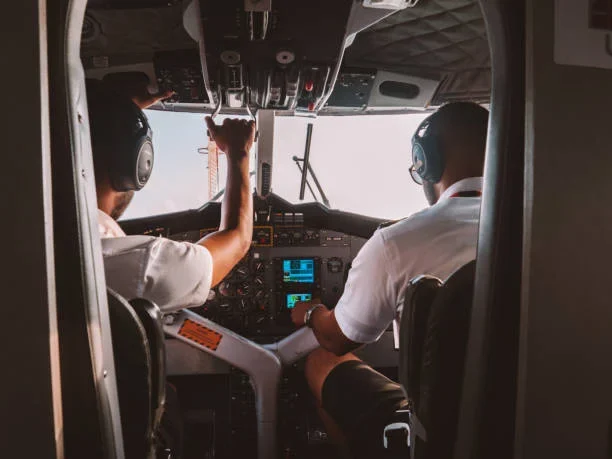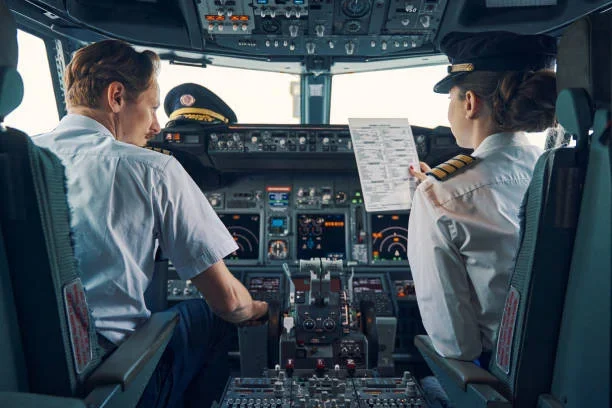When something goes wrong at 38,000 feet, passengers see only the oxygen masks, the crew’s calm instructions, and the sudden change in flight path. What they don’t see is the intense decision-making process unfolding in the cockpit. Pilots must assess risks within seconds, choose the safest landing option, and work seamlessly with air traffic control, all while maintaining control of the aircraft.
1. Setting the Stage: When the Unthinkable Happens
Emergencies in flight are rare, but when they arise, every second counts. From engine failures to fires or sudden depressurization, pilots must respond with focus, precision, and composure.

2. Types of Emergency Landings: Knowing the Difference
Pilots distinguish among several scenarios:
- Precautionary landings, when a developing hazard suggests stopping flight early, have a remarkably low fatality rate of around 0.06 %.
- Forced landings, where power loss mandates immediate touchdown; here, fatality rates are near 10 %.
- Ditchings, or water landings, carry the highest risk, around 20 %.
3. The Pilot’s Decision-Making Framework: A Four-Step Flow
Pilots rely on a structured process, often within the Aeronautical Decision Making (ADM) framework:
- Situation awareness, accurately recognizing the emergency at hand.
- Options generation, considering all possible actions, from diverting to aborting.
- Decision and commitment, selecting and executing the best course, balancing speed, risk, and feasibility.
The mantra “Aviate, Navigate, Communicate” keeps the aircraft flying steadily before any external communications begin.
4. Spotting the Landing: Airports vs. Off-Field Sites
Whenever possible, pilots aim for a runway. But if none is within reach, they evaluate off-field terrain:
- Clear fields, avoiding hazards like rocks or streams, are ideal.
- Sometimes touching down in trees is safer than ditching into water; planes’ crash-worthiness and controlled descent matter.
- Real pilot experiences align: “Find a suitable field and commit to it” is key; indecision costs altitude and time.
5. Step-By-Step: From Emergency Declaration to Touchdown
Drawing on standard emergency landing procedure resources:
- Maintain control, fly the aircraft smoothly while handling the issue.
- Declare an emergency (“Mayday” or “Pan-Pan”) to ATC for priority handling.
- Identify landing site, airport, or best available terrain.
- Pre-landing checks, gear, flaps, fuel, systems.
- Execute landing, controlled descent at optimal speed, minimizing impact.
- Evacuate swiftly post-touchdown if needed.
6. The Training Factor and Checklists
Pilots train rigorously to internalize memory items for immediate action and consult emergency checklists for follow-up procedures. This blend of quick reflexes and methodical execution can be a lifesaver.
7. Learning from Real Incidents
Pilots navigate emergencies in high-stakes, real-world moments:
- In critical cases like Southwest Flight 1380, engine failure plus rapid depressurization forced pilots to descend swiftly, coordinate with ATC, and land at the nearest suitable airport.
- Legendary Flight 1549 “Miracle on the Hudson” saw Captain Sullenberger execute a perfectly judged ditching, informed by sound decision-making and crew coordination.
8. The Human Elements: CRM, Training, and Preparedness
Human factors influence outcomes. Crew Resource Management (CRM), born from tragedies like United Airlines Flight 173, promotes shared decision-making and situational awareness to prevent single-person fixation or oversight.

9. Linking the Headlines: Recent Diversions in Focus
These decisions aren’t just theory, they’ve played out in real skies. During the Delta Flight DL275 pilot decision, the crew made a critical call that led to an emergency diversion to Los Angeles, showing just how quickly circumstances can change. Similarly, the UA770 diversion pilot action highlighted how flight crews evaluate technical issues, balance safety with schedule demands, and work with air traffic control to secure the nearest safe landing. Both examples tie into the broader lessons outlined in Causes & Lessons Learned from Recent US Flight Diversions, where experts stress that preparation, training, and clear communication often turn potential disasters into safe, controlled outcomes.

Conclusion: Cool Heads and Clear Strategy Save Lives
From rapid threat assessment to decisive action, pilots rely on training, structured thinking, and clarity under pressure. Their ability to choose, commit, and manage emergencies, enabled by ADM, CRM, and checklists, is what protects lives when things go awry.












